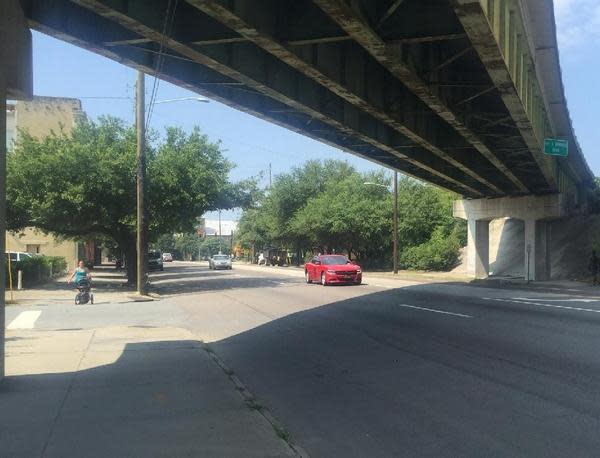City Talk: City Council ramps up the long drive toward the removal of the I-16 flyover

This is the City Talk column by Bill Dawers, a longtime contributor to the Savannah Morning News.
Savannah City Council recently took a key step toward the eventual removal of the I-16 exit ramp that has for decades been a physical, economic and psychological barrier impacting numerous neighborhoods on the west side.
In a 7-2 vote, council members entered into an agreement with the Georgia Dept. of Transportation for preliminary engineering related to the flyover’s removal. City Manager Jay Melder said that GDOT would still need to establish the feasibility of the project, but it’s worth noting that the state agency determined in 2008 that the ramp removal would not have a “significantly detrimental effect” on the street network in the area.
In 2012, an extensive report detailed the history of Martin Luther King, Jr. Boulevard, which was known as West Broad Street until 1990, and included an extensive analysis of possibilities. That same year, City Council adopted a resolution supporting the reclamation of "Old West Broad Street," and the removal of the flyover made it onto the list of projects that would have been funded in the regional TPLOST that was rejected by voters.
More: City roundup: Savannah council greenlights study for MLK flyover removal, Kiah House zoning
At the recent council meeting, Alderwoman Alicia Miller-Blakely raised concerns about the connection between the current initiative and past efforts that focused so specifically on the street’s original name.
Some Savannah natives, including former mayor and current state representative Edna Jackson, have expressed nostalgia for the name West Broad Street, which played a crucial role in African-American civic life in Savannah for many decades before businesses and residents were displaced for construction of the flyover.
But there is no reason to get caught up in street names at this critical juncture.
Despite the setbacks a decade ago, support for removal of the flyover remained strong in some quarters, including here at City Talk.
More City Talk: Time for Savannah leaders to look again at removing I-16 exit ramp
The adoption of the federal Reconnecting Communities pilot program opened up new possibilities by the end of 2021, and a coalition of activists made a pitch to council in 2022.
Sen. Raphael Warnock (D-GA), who was raised in nearby Kayton Homes public housing, is the highest profile supporter of the ramp removal. “It is a dream of mine to see that community restored,” Warnock said in a letter to Transportation Secretary Pete Buttigieg.
Of course, as Warnock acknowledged, the neighborhoods that were decimated by the highway ramp will never be what they were. Sometimes it is important for public officials to take steps to redress historical wrongs, but the redevelopment project could end up costing tens of millions of dollars.
At the council meeting, Melder summarized several of the key arguments in support of the exit ramp removal. He emphasized the advantages of improved connectivity and noted that the project would allow for two-way traffic for all of Montgomery Street.
The redesign recommended in the 2008 GDOT study would result in five reconnected streets and the reestablishment of seven city blocks, which would pay lasting dividends in terms of economic activity and tax revenues.
And, as was shown in the 2012 study, there are arguably better options than those outlined by GDOT.
If the project is actually going to maintain its momentum, officials will need to be clear that they are trying to make Savannah a more vibrant city for the future and not simply trying to recreate the past.
Bill Dawers can be reached via @billdawers on Twitter and CityTalkSavannah@gmail.com.
This article originally appeared on Savannah Morning News: Dawers: Long history, bright future in drive for I-16 flyover removal
